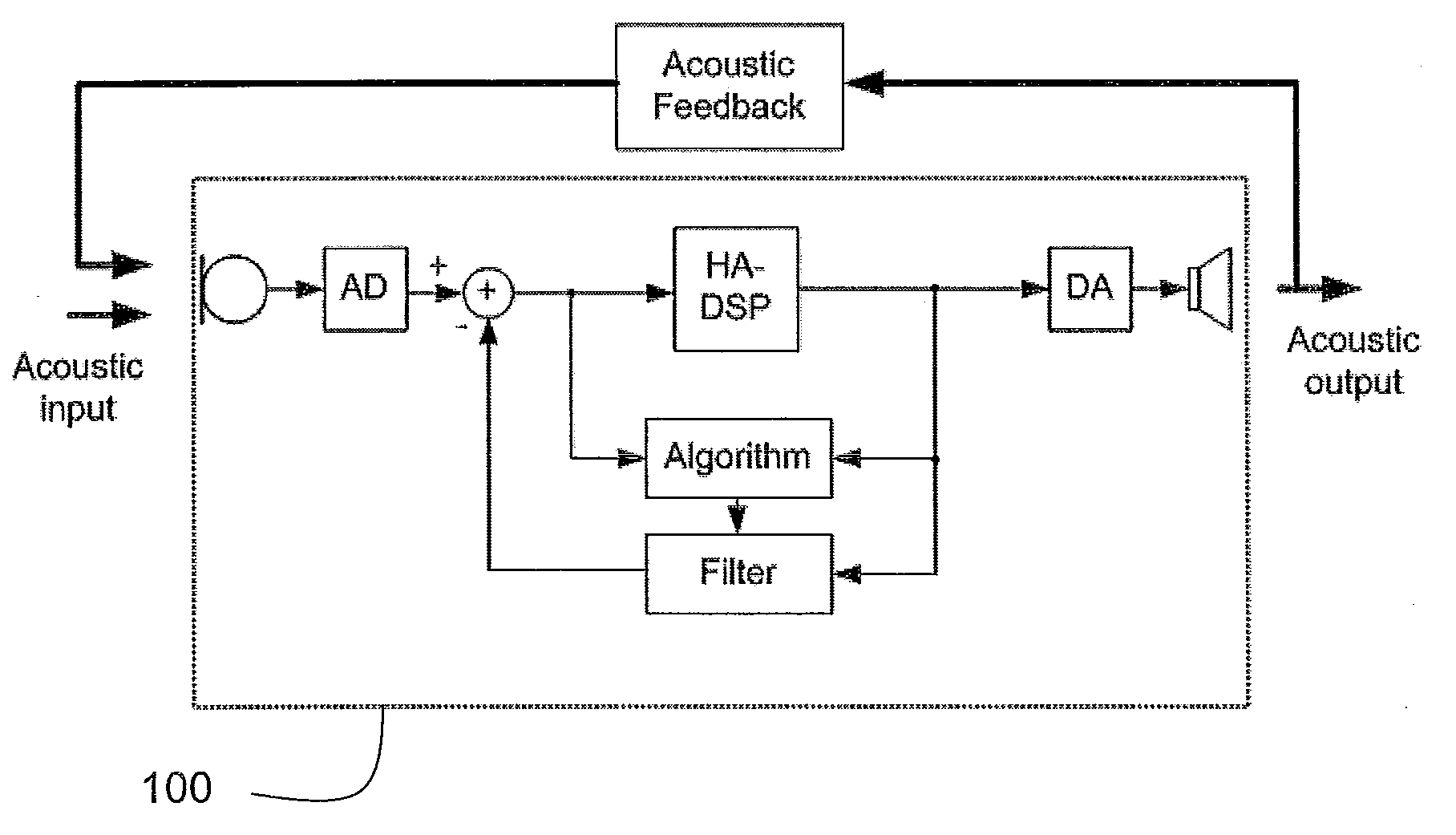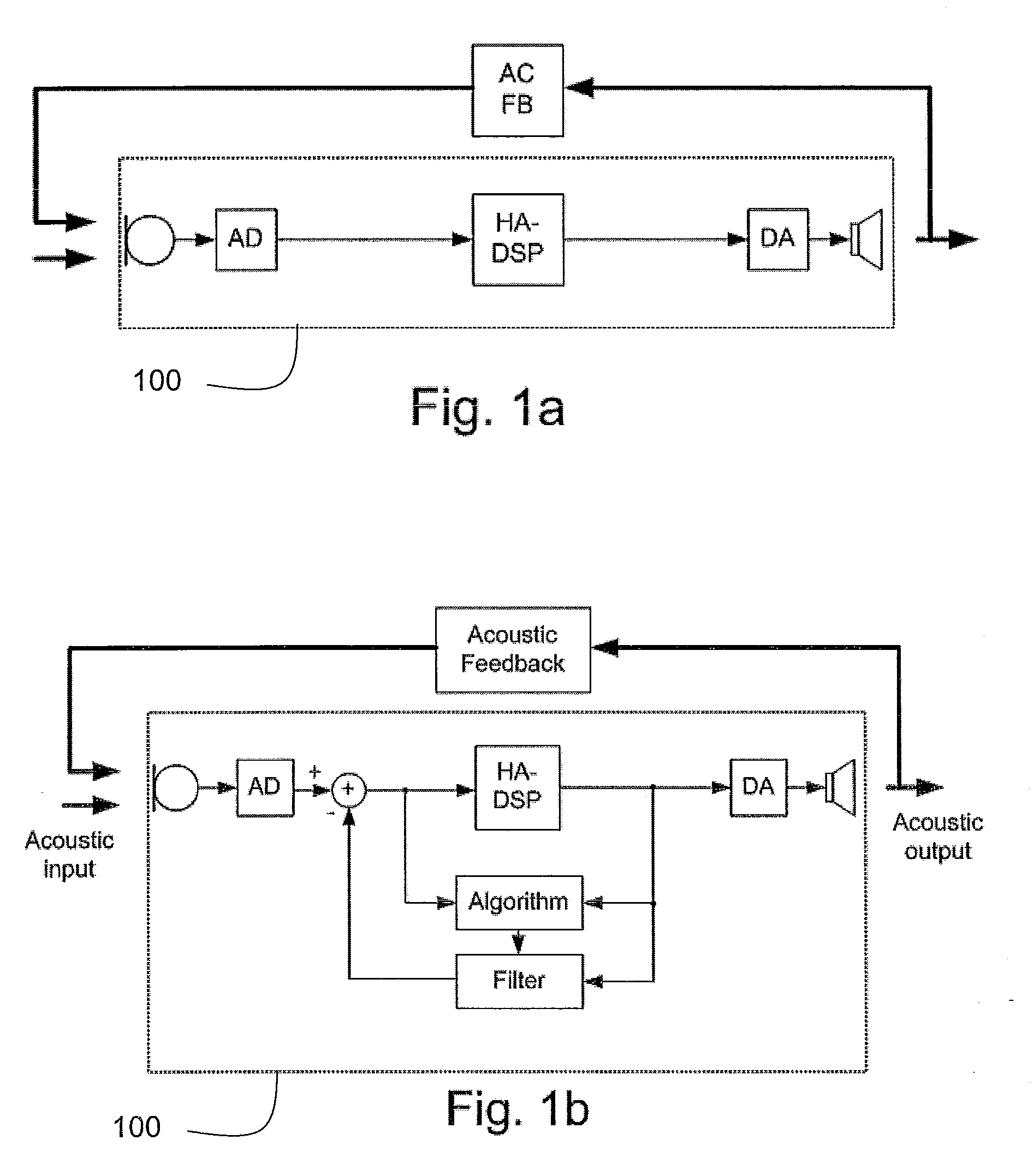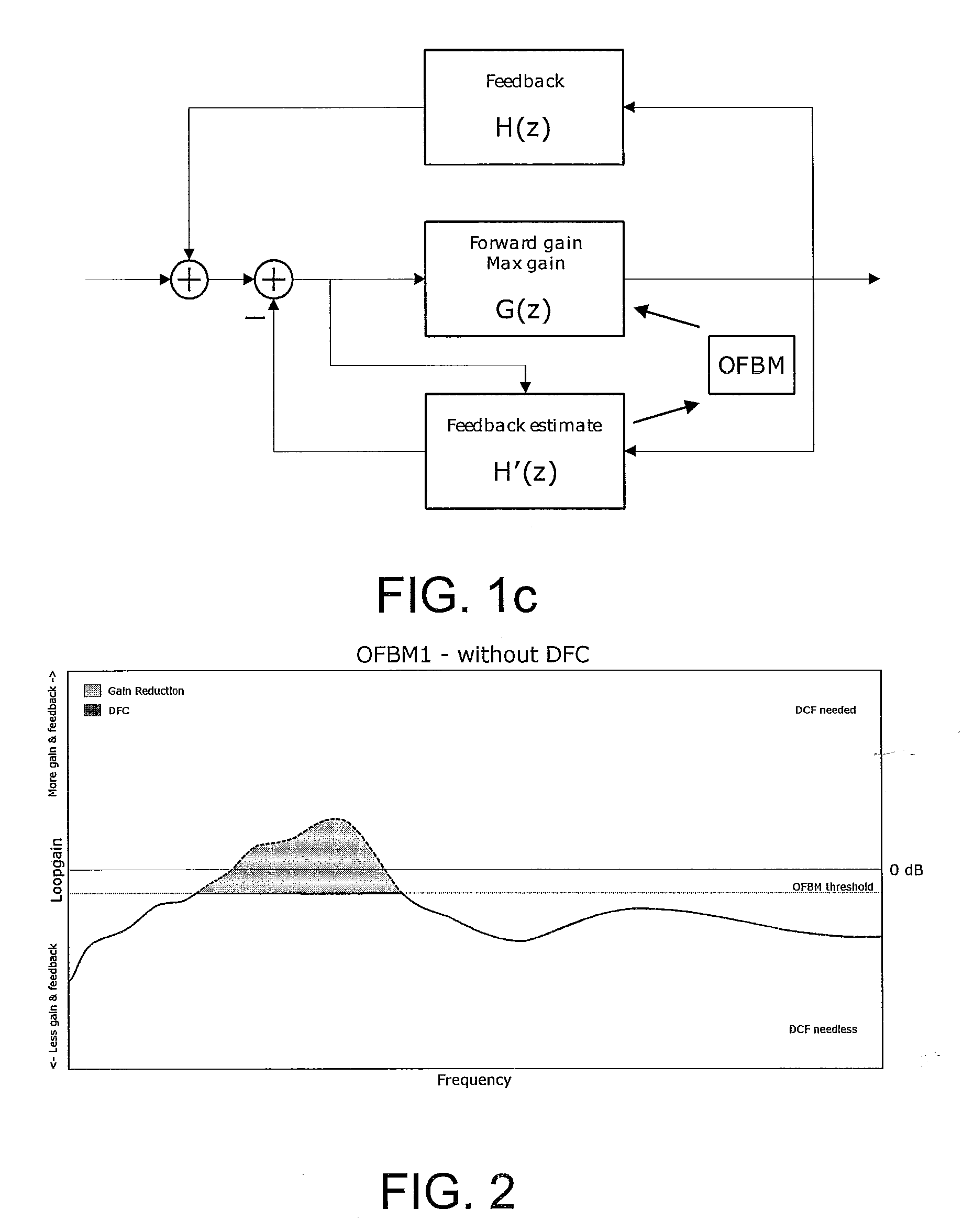Online Anti-feedback system for a hearing aid
a hearing aid and anti-feedback technology, applied in the field of hearing aid anti-feedback system, can solve the problems of howling and instability of hearing aids, and achieve the effects of reducing the risk, reducing the max gain, and increasing the risk of howling
- Summary
- Abstract
- Description
- Claims
- Application Information
AI Technical Summary
Benefits of technology
Problems solved by technology
Method used
Image
Examples
example 1
OFBM1, Use of an (Relatively Fast) OFBM as an AFB-System
Standalone:
[0141]The OFBM1 is able to work as an (standalone) AFB system, if the target (predefined gain limit) for the OFBM1 is <0 dB loop gain and the system has a relatively fast update speed of e.g. 100 ms (i.e. an update frequency around 10 Hz). The closer the target loop gain is to 0 dB the faster a system is needed (the higher the update frequency). If the target is below 0 dB loop gain, the DFC system can be bypassed and only used for estimating the feedback path (cf. FIG. 2).
[0142]FIG. 2 shows a loop gain vs. normalized frequency curve for a hearing aid according to an embodiment of the invention comprising an online feedback manager unit OFBM1 used as an AFB system without a dedicated DFC system. The normalized frequency range corresponds to a real frequency range of e.g. 20 Hz to 12 kHz. The OFBM1 system uses the feedback estimate to control the maximum gain of the feedback loop. The DFC is not needed, because the fe...
example 2
OFBM2, Use of an (Relatively Fast) OFBM as a Feedback Limiter
[0148]The OFBM can be used to limit the maximum loop gain. The working interval for the DFC system is from −∞ dB to +∞ dB loop gain. This interval is difficult to handle, and it is well known that a working interval from about 0 dB to 12 dB loop gain is the optimum for the DFC system. Using the OFBM to limit the maximum loop gain ensures that the DFC system will not be pushed too much: If the loop gain increases above the limit (predefined gain limit), the forward gain will be reduced and thus increase the ability for the DFC system to remove the feedback. This can be seen as changing the working interval for the DFC from −∞ dB to +∞ dB loop gain to e.g.−∞ dB to a predefined gain limit, here +12 dB loop gain (cf. FIG. 4). FIG. 4 shows a loop gain vs. normalized frequency curve for a hearing aid according to an embodiment of the invention comprising an online feedback manager unit OFBM2 used as feedback limiter. If the loop...
example 3
OFBM3, Use of an (Relatively Slow) OFBM as a Feedback Optimizer
[0152]The OFBM3 can be seen as an adaptive addition to the initial max gain IGmax set during an initial (or later) fitting procedure (e.g. by an audiologist). It is known that the feedback path will change over time as a result of the different conditions through the day or days. The target of the OFBM3 is to slowly update the max gain to follow these changes.
[0153]If the max gain is too low, the user has less gain than wanted and the DFC system has problems estimating the feedback path (cf. FIG. 5). FIG. 5 shows a loop gain vs. normalized frequency curve for a hearing aid according to an embodiment of the invention comprising an online feedback manager unit OFBM3 used as feedback optimizer in a case of too low maximum gain. The maximum gain is too restrictive, so the user might not get the wanted gain.
[0154]If max gain IGmax is too high, it will be more difficult for the DFC system to handle quick and large increases in...
PUM
| Property | Measurement | Unit |
|---|---|---|
| frequency | aaaaa | aaaaa |
| frequency | aaaaa | aaaaa |
| frequency | aaaaa | aaaaa |
Abstract
Description
Claims
Application Information
 Login to View More
Login to View More - R&D
- Intellectual Property
- Life Sciences
- Materials
- Tech Scout
- Unparalleled Data Quality
- Higher Quality Content
- 60% Fewer Hallucinations
Browse by: Latest US Patents, China's latest patents, Technical Efficacy Thesaurus, Application Domain, Technology Topic, Popular Technical Reports.
© 2025 PatSnap. All rights reserved.Legal|Privacy policy|Modern Slavery Act Transparency Statement|Sitemap|About US| Contact US: help@patsnap.com



